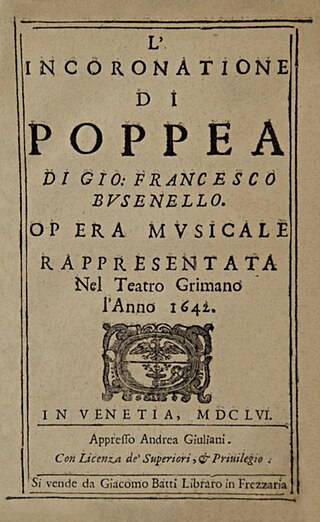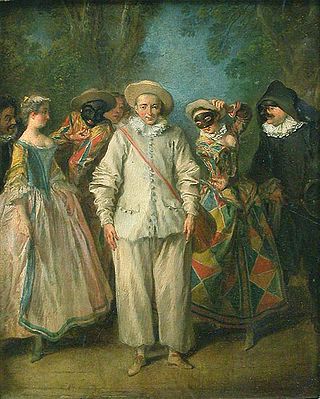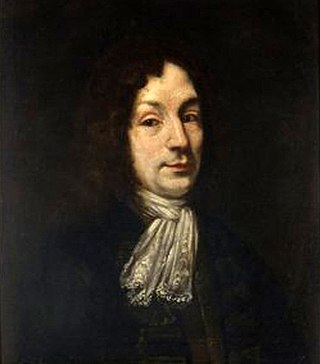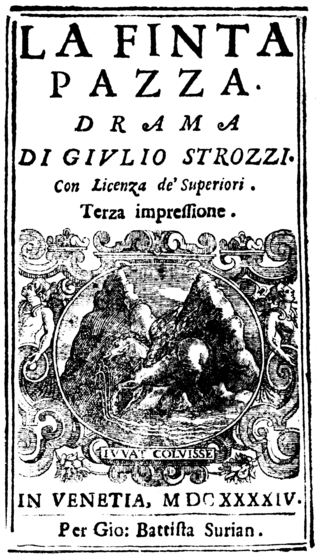
Il ritorno d'Ulisse in patria is an opera consisting of a prologue and five acts, set by Claudio Monteverdi to a libretto by Giacomo Badoaro. The opera was first performed at the Teatro Santi Giovanni e Paolo in Venice during the 1639–1640 carnival season. The story, taken from the second half of Homer's Odyssey, tells how constancy and virtue are ultimately rewarded, treachery and deception overcome. After his long journey home from the Trojan Wars Ulisse, king of Ithaca, finally returns to his kingdom where he finds that a trio of villainous suitors are importuning his faithful queen, Penelope. With the assistance of the gods, his son Telemaco and a staunch friend Eumete, Ulisse vanquishes the suitors and recovers his kingdom.

L'incoronazione di Poppea is an Italian opera by Claudio Monteverdi. It was Monteverdi's last opera, with a libretto by Giovanni Francesco Busenello, and was first performed at the Teatro Santi Giovanni e Paolo in Venice during the 1643 carnival season. One of the first operas to use historical events and people, it describes how Poppaea, mistress of the Roman emperor Nero, is able to achieve her ambition and be crowned empress. The opera was revived in Naples in 1651, but was then neglected until the rediscovery of the score in 1888, after which it became the subject of scholarly attention in the late 19th and early 20th centuries. Since the 1960s, the opera has been performed and recorded many times.

Giulio Strozzi was a Venetian poet and libretto writer. His libretti were put to music by composers like Claudio Monteverdi, Francesco Cavalli, Francesco Manelli, and Francesco Sacrati. He sometimes used the pseudonym Luigi Zorzisto.
Francesco Sacrati was an Italian composer of the Baroque era, who played an important role in the early history of opera. He wrote for the Teatro Novissimo in Venice as well as touring his operas throughout Italy. His most famous piece is La finta pazza, said to be the first opera ever performed in France. The manuscript of this work was long thought to be lost but a touring edition of the manuscript was discovered by musicologist Lorenzo Bianconi in 1984. Some of the music bears striking similarities to the score of Monteverdi's L'incoronazione di Poppea, prompting scholars to speculate that Sacrati had a part in composing the surviving version of that opera. The United States premiere of La finta pazza, and first performance outside Europe, occurred in April 2010 at Yale University.
Giuseppe Farinelli was an Italian composer active at the end of the 18th century and the beginning of the 19th century who excelled in writing opera buffas. Considered the successor and most successful imitator of Domenico Cimarosa, the greatest of his roughly 60 operas include I riti d'Efeso, La contadina bizzarra and Ginevra degli Almieri. More than 2/3 of his operas were produced between 1800 and 1810 at the height of his popularity. With the arrival of Gioachino Rossini his operas became less desirable with the public, and by 1817 his operas were no longer performed. His other compositions include 3 piano forte sonatas, 3 oratorios, 11 cantatas, 5 masses, 2 Te Deums, a Stabat Mater, a Salve Regina, a Tantum ergo, numerous motets, and several other sacred works.

Anna Renzi was an Italian soprano renowned for her acting ability as well as her voice, who has been described as the first diva in the history of opera.

Comédie-Italienne or Théâtre-Italien are French names which have been used to refer to Italian-language theatre and opera when performed in France.
Giovanni Faustini was an Italian librettist and opera impresario of the 17th century. He is best remembered for his collaborations with the composer Francesco Cavalli.

Giacomo Torelli was an Italian stage designer, scenery painter, engineer, and architect. His work in stage design, particularly his designs of machinery for creating spectacular scenery changes and other special effects, was extensively engraved and hence survives as the most complete record of mid-seventeenth-century set design.

Carlo Francesco Pollarolo was an Italian composer, organist, and music director. Known chiefly for his operas, he wrote a total of 85 of them as well as 13 oratorios. His compositional style was initially indebted to the opera tradition of Giovanni Legrenzi and Carlo Pallavicino, but he moved beyond this style with innovations to the compositional structure of the aria characterized by expanded forms and orchestral elaborations. His early work used three part strings in the Legrenzi and Pallacino tradition of orchestration, but his mid and later works had developed into a richer orchestration of five strings parts and expanded instrumentation of brass and woodwinds. He was the first Venetian opera composer and one of the earliest Italian composers to use the oboe in his opera orchestrations.

The Teatro Santi Giovanni e Paolo was a theatre and opera house in Venice located on the Calle della Testa, and takes its name from the nearby Basilica of Santi Giovanni e Paolo, Venice. Built by the Grimani family in 1638, in its heyday it was considered the most beautiful and comfortable theatre in the city. The theatre played an important role in the development of opera and saw the premieres of several works by Francesco Cavalli, as well as Monteverdi's Il ritorno d'Ulisse in patria and L'incoronazione di Poppea.

The Accademia degli Incogniti, also called the Loredanian Academy, was a learned society of freethinking intellectuals, mainly noblemen, that significantly influenced the cultural and political life of mid-17th century Venice. The society was founded in 1630 by Giovanni Francesco Loredan and Guido Casoni, and derived its basic Aristotelian philosophy from Cesare Cremonini, a Peripatetic who was a professor of philosophy at the University of Padua. The society included historians, poets, and librettists.
Giovanni Rovetta was an Italian Baroque composer and maestro di capella of the Capella Marciana at St Mark's Basilica, Venice between Monteverdi and Cavalli.

Luca Antonio Predieri was an Italian composer and violinist. A member of a prominent family of musicians, Predieri was born in Bologna and was active there from 1704. In 1737 he moved to Vienna, eventually becoming Kapellmeister to the imperial Habsburg court in 1741, a post he held for ten years. In 1765 he returned to his native city where he died two years later at the age of 78. A prolific opera composer, he was also known for his sacred music and oratorios. Although his operas were largely forgotten by the end of his own lifetime and most of their scores lost, individual arias as well some of his sacred music are still performed and recorded.

The Italian composer Claudio Monteverdi (1567–1643), in addition to a large output of church music and madrigals, wrote prolifically for the stage. His theatrical works were written between 1604 and 1643 and included operas, of which three—L'Orfeo (1607), Il ritorno d'Ulisse in patria (1640) and L'incoronazione di Poppea (1643)—have survived with their music and librettos intact. In the case of the other seven operas, the music has disappeared almost entirely, although some of the librettos exist. The loss of these works, written during a critical period of early opera history, has been much regretted by commentators and musicologists.

Achilles on Skyros is an episode in the myth of Achilles, a Greek hero of the Trojan War. Not existing in Homer's epic poem Iliad, the episode is written down in detail in some later versions of the story, particularly the Achilleid by the Roman poet Statius. The story of how Achilles disguised himself as a girl at the court of the king of Skyros, fell in love with one of the princesses, and married her before leaving for Troy, became a popular topic in arts and literature from Classical times until the middle of the 20th century. The carnivalesque disguises and gender transpositions at the heart of the story were particularly popular in opera, with over 30 different operas on the theme between 1641 and 1857.

La finta pazza is an opera composed by Francesco Sacrati to a libretto by Giulio Strozzi. Its premiere in Venice during the Carnival season of 1641 inaugurated the Teatro Novissimo. It became one of the most popular operas of the seventeenth century.

La finta savia is a 1643 drama by Giulio Strozzi written for the Teatro Santi Giovanni e Paolo with music by Filiberto Laurenzi. It is a sequel to Strozzi's La finta pazza (1641) whi was set to music by Francesco Sacrati. The music was mainly by Laurenzi but was supplemented in act 1 with scenes 3 to 5, 10 and 12 by Tarquinio Merula, in scene 6 mainly by Arcangelo Crivelli except for a canzonetta by Laurenzi. In act 1, scenes 2 and 3 were by Crivelli and in act 3 scenes 1 and 7 to 9 by Benedetto Ferrari.















